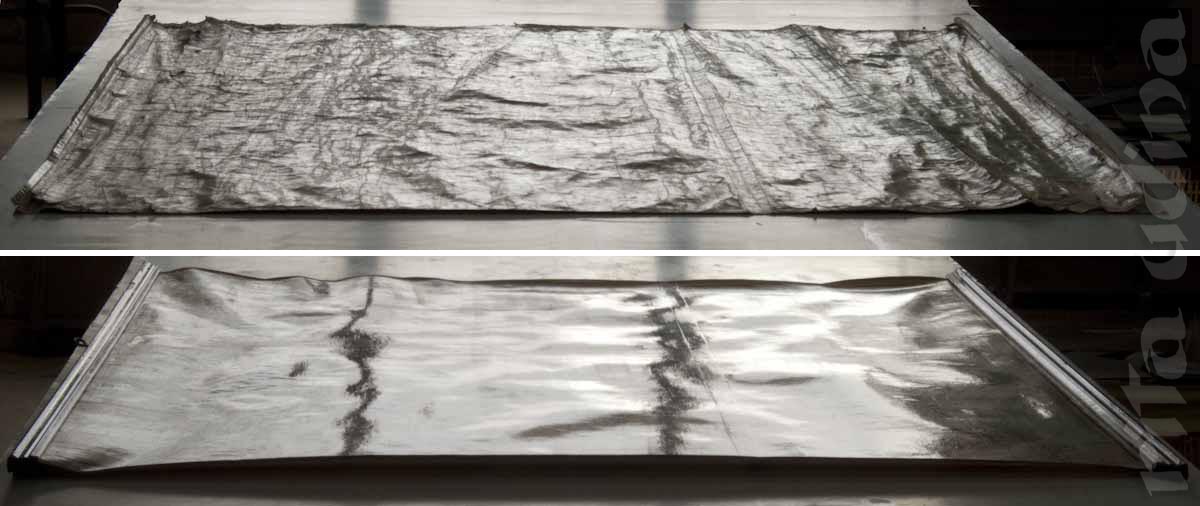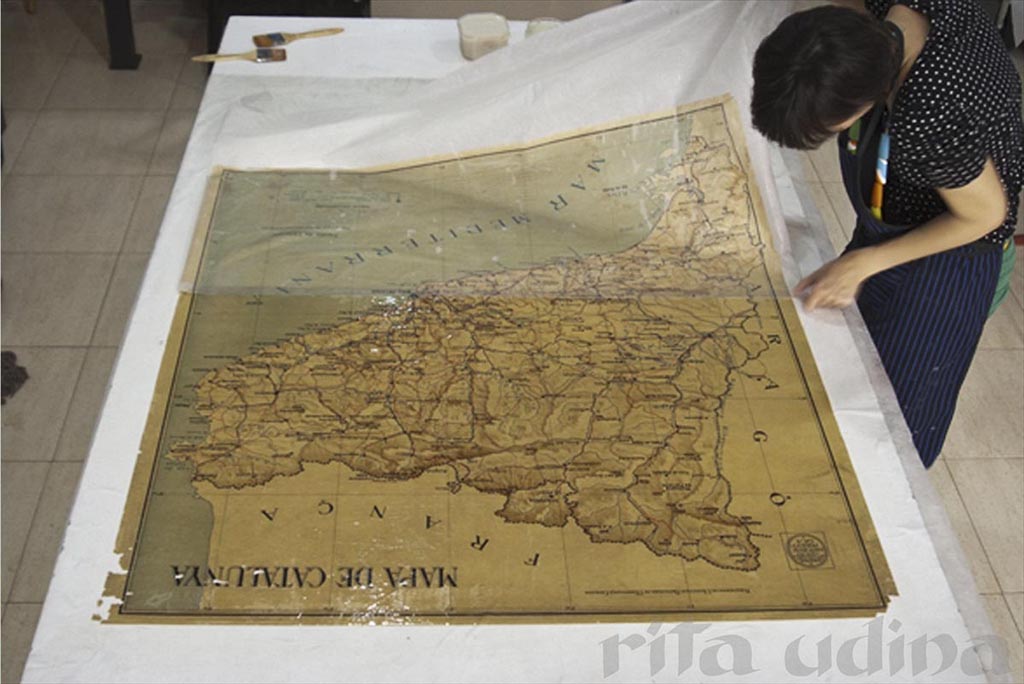Conservation of school map from civil war
- Owner: Museums of Sabadell.
- Artefact: This map represents the typical school posters: with its wooden slats to roll and hang, lined on the back. It was very common to varnish them with shellac to waterproof and protect them from abrasion. This one was made of two pieces of printed paper, sticked together along the central horizontal stripe.
- Author:
- Date: 1936.
- Damages: The main degradation was the varnish layer (shellac) which causes cracks and dries paper fibres. At the end this oxidizes and turns yellow the object. Its relatively large scale (121 x 117 cm) does not help on its conservation either.
- Conservation treatment: Removing the old varnish has allowed to repare other minor damages: tears, gaps and wrinkles. But most important is that the new varnish is not oxidizing nor yellowing. As it is very flexible it will not crack in the future. The conservation has removed harmful aspects and healed the main damages, respecting the map’s original features and appearance: gloss, presentation with the wooden slats, cloth on the back and tapes on edges. The products applied are reversible and long term preservation.
- Conservartors: Marina Carbonell, Rita Udina.
- Other links: Blog post.

Damp stains were also a minor damage (in terms of physical and chemical stability of the object), though at first glance they were very annoying. Once they were cleaned, tha map can be best enjoyed. Micro cracking of the varnish affected the clarity of the work, dampening colours and blurring lines. After the old varnished has been removed, colours recover intensity and definition.
The restoration has eliminated harmful aspects and healed the main damages, respecting the map’s original characteristics and appearance: gloss, presentation with the wooden slats, cloth on the back and ribbons. The products applied are reversible and long term preservation.
Clients
Types of projects
Conservation of school map from civil war
- Owner: Museums of Sabadell.
- Artefact: This map represents the typical school posters: with its wooden slats to roll and hang, lined on the back. It was very common to varnish them with shellac to waterproof and protect them from abrasion. This one was made of two pieces of printed paper, sticked together along the central horizontal stripe.
- Author:
- Date: 1936.
- Damages: The main degradation was the varnish layer (shellac) which causes cracks and dries paper fibres. At the end this oxidizes and turns yellow the object. Its relatively large scale (121 x 117 cm) does not help on its conservation either.
- Conservation treatment: Removing the old varnish has allowed to repare other minor damages: tears, gaps and wrinkles. But most important is that the new varnish is not oxidizing nor yellowing. As it is very flexible it will not crack in the future. The conservation has removed harmful aspects and healed the main damages, respecting the map’s original features and appearance: gloss, presentation with the wooden slats, cloth on the back and tapes on edges. The products applied are reversible and long term preservation.
- Conservartors: Marina Carbonell, Rita Udina.
- Other links: Blog post.

Damp stains were also a minor damage (in terms of physical and chemical stability of the object), though at first glance they were very annoying. Once they were cleaned, tha map can be best enjoyed. Micro cracking of the varnish affected the clarity of the work, dampening colours and blurring lines. After the old varnished has been removed, colours recover intensity and definition.
The restoration has eliminated harmful aspects and healed the main damages, respecting the map’s original characteristics and appearance: gloss, presentation with the wooden slats, cloth on the back and ribbons. The products applied are reversible and long term preservation.













